Burning craters of pimples on the skin of the face are a problem familiar to many. Unfortunately, it does not always go away after adolescence. Often, problematic skin becomes a companion for fully grown people for many years.
Of course, for successful treatment of pimples and acne, consultation with a dermatologist is necessary, since only a doctor can make the correct diagnosis, as well as establish the true cause of the rash.. However, treatment requires an integrated approach; both the external manifestations of acne and the internal causes of their occurrence are treated. To reduce the number of skin rashes, zinc paste is perfect; its use has been proven over the years.
What components does the paste consist of?
Zinc paste is a remedy known to our grandmothers; it was used to treat a wide variety of skin diseases in addition to acne. These include:
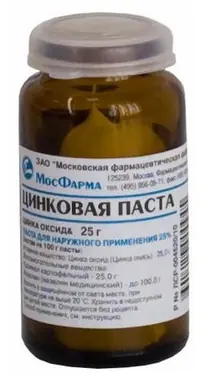
- Pyoderma;
- Fungal skin diseases;
- Psoriasis;
- Streptoderma;
- Allergic skin rashes;
- Bedsores;
- Diaper dermatitis.
Unfortunately, in our times it is quite rare to use this remedy in the fight against acne, because there are enough advertised cosmetics in pharmacies and on store shelves. While a remedy that has been tested over the years and by many generations of patients is becoming increasingly difficult to find on sale. And it’s completely in vain, because zinc paste for acne has a unique set of components that provides comprehensive treatment for acne and is quite inexpensive.
Here is a list of paste components:
- Vaseline oil;
- zinc oxide;
- potato starch;
- zinc-based ointment;
- salicylic acid.
Salicylic acid is an antibacterial and anti-inflammatory agent that has a fairly mild effect, that is, it eliminates inflammation on the skin, but does not cause burning or dry out the skin.
Zinc-based ointment and zinc oxide - treat the causes of profuse skin rashes, namely, eliminate excess sebum secretion, remove oily sheen, and also suppress the growth and activity of microorganisms that cause inflammation.
Vaseline oil has a softening effect and forms a protective film on the skin. This component also gives the desired consistency to the paste, making it easy to apply.
Potato starch dries the skin and promotes rapid healing of inflammation.
Application
Acne must be treated carefully: you must constantly monitor the condition of your facial skin and remember to apply the paste to the most problematic areas at least 2-3 times a day. Of course, you need to understand that severe acne can be associated with various internal diseases, hormonal disorders or an excess of fatty foods in the diet.
Without eliminating the above reasons, even the most effective paste will not get rid of acne; they will appear again and again.
So, the use of zinc paste for acne:
- First, the skin must be cleaned: you need to wash with soap or a special cleanser;
- hands must also be washed thoroughly before the procedure;
- wipe the skin with a towel;
- apply a thin layer of zinc paste to problem areas;
- exposure time of the product is 10-15 minutes;
- After the procedure, the paste must be washed off with warm water.
Zinc paste slightly dries the skin, so after its use you may experience a slight feeling of tightness and flaking may occur. Therefore, after using this product, it is necessary to moisturize the skin with face cream.
Contraindications for use
Zinc paste is a natural product; it contains no artificial colors or flavors, so it rarely causes allergic reactions. However, sometimes they do occur. Here are the most common allergy symptoms:
If you experience similar symptoms after applying zinc paste, this indicates an individual intolerance to its components, you must stop treatment with this remedy and immediately seek medical help
Allergies often occur if zinc paste is applied to wounds, which often occur with advanced acne.
This cannot be done. You must wait until the damaged skin heals or use another product.
Pregnant and lactating women are also not recommended to use zinc paste. You should consult your doctor before using it..
Acne on the skin is not a fatal phenomenon, but rather unpleasant; it brings mostly psychological discomfort to the patient and occurs not only in adolescence. A faithful ally of both doctors and patients in the fight against this unpleasant problem is zinc paste. This proven and inexpensive remedy can be bought in almost every pharmacy at a very reasonable price.
Zinc ointment for acne on the face belongs to the category of inexpensive but quite effective drugs, judging by user comments, if acne is mild. Despite the fact that zinc oxide does not include acne on its list of indications, some user reviews call the drug nothing less than “effective.”
General description of the medication
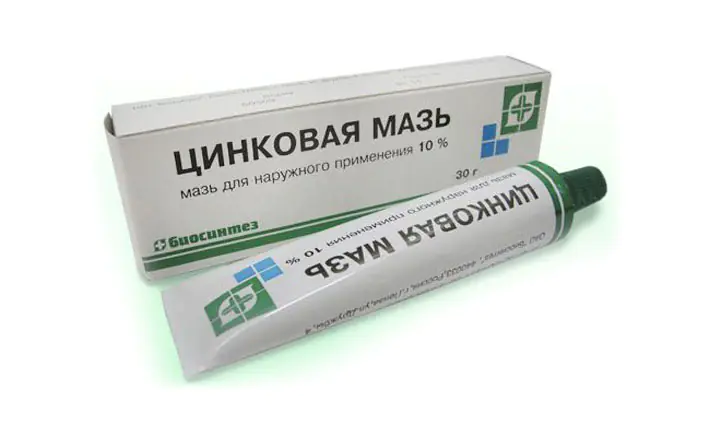
Zinc ointment is one of the forms of the drug in which the main active substance is zinc oxide. In 100 gr. white substance contains 10 grams. zinc oxide and 90 gr. Vaseline. Due to the absence of hormonal substances and antibiotics in the composition, the product is considered safe and if it is used, an overdose is not possible. Zinc ointment for acne can be used during pregnancy and lactation.
Actions provided
Zinc ointment helps against acne, according to users, due to the range of actions it has on the skin:
- eliminates inflammatory processes;
- dries;
- has a disinfecting effect;
- reduces pus secretion and irritation.
The antiseptic property of the oxide is not strong enough to suppress the development of bacteria that cause acne, which is why the instructions do not include such a disease in the list of indications.
When the substance is applied to an open abscess, it covers it with a film (has an astringent effect) and protects the wound from the penetration of microbes - this action is the anti-inflammatory property of the medication.
Zinc oxide is a powder substance with adsorbent properties, so it is able to absorb toxins produced during the life of bacteria and thus have a drying effect.
The Vaseline in the composition is responsible for ensuring that the resulting film remains on the wound for a long time.
Methods of application
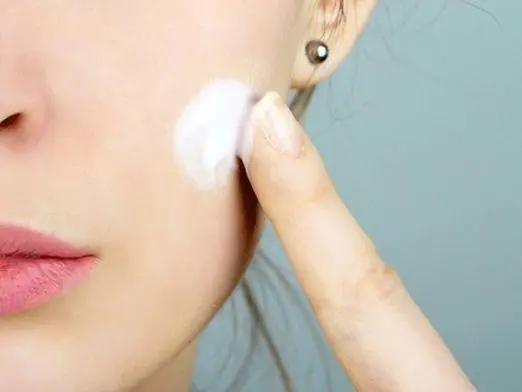
Before using zinc ointment for acne, problem areas of the skin should be prepared by treating them with an antiseptic such as Chlorhexidine, which has also found its use against acne. Another tip (according to reviews) is to wash with tar soap before applying the product.
Zinc ointment, instructions for use for acne:
- The product is applied to the entire affected surface in a thin layer or spotwise for a small amount of acne.
- You cannot distribute the drug with massaging movements, since in the presence of pustular rashes, you can aggravate the situation and contribute to the spread of the inflammatory process into the deeper layers of the dermis and neighboring healthy areas, i.e. both vertically and horizontally.
- The medicine should be used at least 2-3 times a day, the maximum allowed is 6 times a day.
- The holding time is half an hour. Then you should blot the treated areas with a cotton pad and rinse off the residue with warm water.
Some users leave the oxide on overnight due to the inability to apply it during the day. Another tip from reviews is that in order to quickly wash off the greasy substance in the morning, you should first lubricate your face with vegetable oil and then wash your face using your usual foam or gel.
Zinc ointment for acne on the face, which is used using the methods described above, will help cope with the manifestations of acne in the form of slight redness and inflammation. It will dry out the opened abscess and disinfect it, but the product does not eliminate the main causes of acne. It is more effective for single acne that occurs from time to time.
Contraindications
The drug has no contraindications, except for individual intolerance. Therefore, before using zinc ointment for acne, you should test for an allergic reaction. To do this, you need to apply a small amount of the substance to the inner surface of the elbow and wait a quarter of an hour. If there is no redness, you can use the oxide for its intended purpose.
Flaws
A zinc-based preparation is 90% petroleum jelly, so when using zinc ointment for acne, you need to be prepared for the fact that it will cover the skin with a thick, airtight film. This white, greasy layer is extremely difficult to wash off with water.
The drug is also resistant to gels and facial washes. In this case, you can use tar soap, which will not only wash away the product, but will also produce an additional therapeutic effect.
A significant disadvantage of this dosage form is the prohibition on the use of cosmetics during treatment. Women and girls often cannot refuse foundation. In this case this is excluded. You can only use the medication while at home.
Before using a zinc-based product, you should decide on your skin type. The drug is not suitable for those with dry epidermis, as it dries out the skin greatly.
Opinion against
Zinc ointment for acne, the use of which in dermatology is disputed, is not used as a monotherapy. This is explained by its low activity against bacteria that have penetrated the ducts of the sebaceous glands and caused acne and inflammation. Nevertheless, zinc is included in suspensions, mash and pastes, where, along with other active substances, it shows the best results.
To understand whether Zinc ointment helps with acne, you should remember the reasons for their appearance, namely:
- excessive sebum secretion;
- hyperkeratosis (thickening and proliferation of cells in the inner layer of the ducts of the sebaceous glands and hair follicles);
- acne bacteria;
- inflammation.
For acne to appear, all 4 factors must work. Sebum mixes with dead cells and forms a viscous mass that clogs the ducts of the sebaceous glands like a plug. Such an environment becomes very attractive for acne bacteria, which rush into these areas and, as a result of the body’s reaction to their vital activity, inflammation occurs - acne appears.
Hair follicles, where the ducts of the sebaceous glands exit, lie at an average depth of 2-4 mm. Zinc oxide is insoluble in water, which means it cannot decompose into ions that can penetrate deep into the skin, enter the area of inflammation and somehow affect hypersecretion and hyperkeratosis. This can only be done by zinc compounds based on hyaluronate, acetate dihydrate and sulfate, which are dissolved in various solvents. These compounds are included in such drugs as Curiosin, Klin AK and Zinerit, which have proven themselves quite well against acne.
If large areas of skin are affected by acne, all of them should be covered with the drug. In this case, zinc ointment for acne can have a completely opposite effect. Zinc dries, but the sebaceous glands perceive excessive dryness as a danger to the skin and begin to produce even more secretion to moisturize it, which provokes a worsening of the situation.
The product also does not have a detrimental effect on bacteria - one of the main links in the appearance of acne. It creates unfavorable living conditions for them on the surface of the skin, but cannot affect the living conditions in the formed comedones (plugs).
Post-acne therapy
No matter how effective the treatment is, acne always leaves traces. These may be pigmented spots or scarring of the skin. Good results from acne marks are demonstrated by two components together - salicylic acid and zinc oxide in the form of a paste. This is a combination drug in which zinc oxide dries, and salicylic acid acts as an antiseptic, anti-inflammatory component and keratolytic. Acid with a keratolytic effect softens the epidermis, causing it to peel.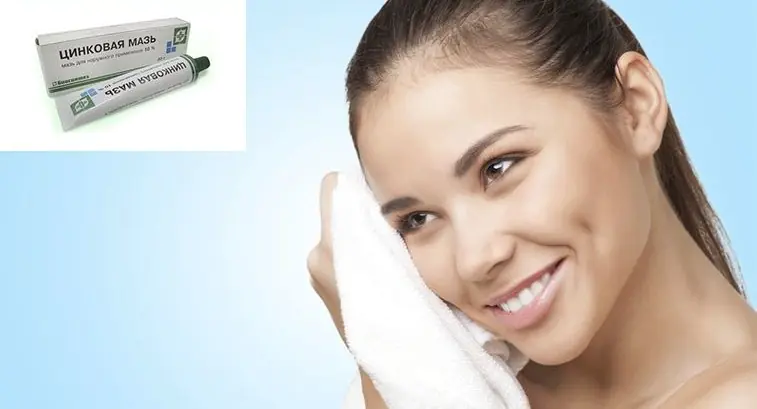
Along with the horny scales, microorganisms are also partially removed from the surface of the skin. Therefore, the combination remedy is more useful for acne spots than for treating acne directly.
Zinc acne ointment: reviews
Judging by the reviews, Zinc anti-acne ointment attracts many users for the following reasons:
- no risk;
- cheapness;
- ease of application.
And based on the pharmacological actions described in the instructions, users have no doubt whether it is possible to smear pimples with zinc ointment. Doctors believe that too many benefits and indications are attributed to this drug. Both zinc and salicylic zinc ointment for acne are not the drugs of choice in the treatment of acne, but can only be used as a secondary remedy.
Oksana:
As soon as a pimple appears, the first thing I do is apply zinc ointment to it with a cotton swab and leave it overnight. In the morning he is no longer there. But for my son, he’s 15, it doesn’t help at all. He has a lot of acne, and we treat it with Zenerite.
Olga:
I tried it on acne spots. There is no special result. They seem to have brightened, but are still noticeable.
Andrey:
Why treat acne with a medicine that is not intended for this. There are many effective drugs, and by the way, based on zinc, which are much more effective. They really cost more.
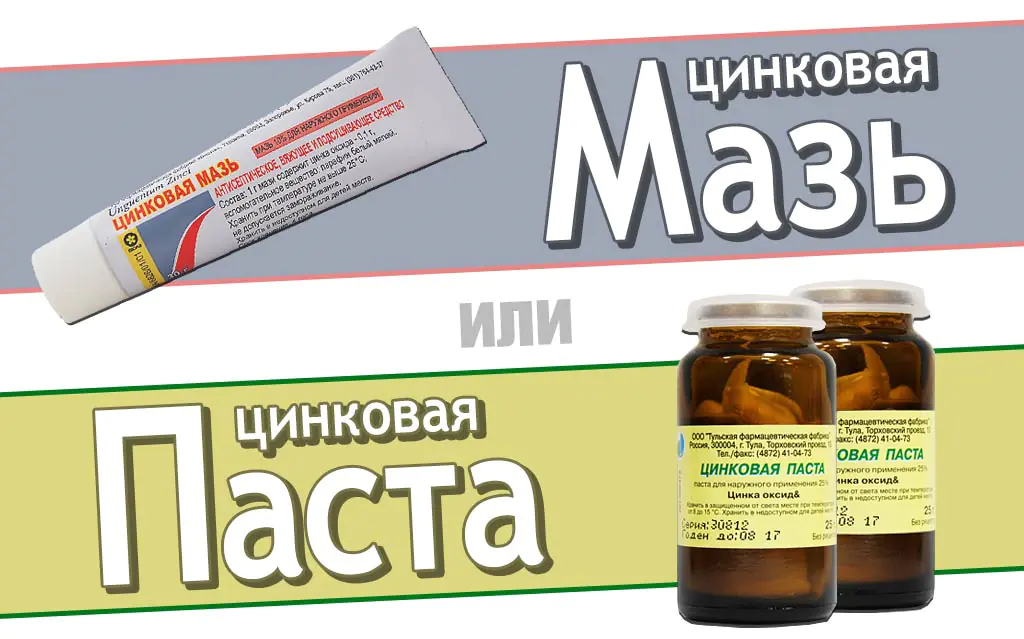
In the instructions for zinc paste for acne, we find that this product is intended for use for skin diseases such as dermatitis, burns of varying degrees, eczema, as well as acne of all stages and types of rashes.
How to apply zinc paste on your face
- First, before applying the paste to the face, inflamed areas of the skin of the body or face should be treated with the antiseptic fucorcin.
- According to the instructions, the paste can be used 2-3 times a day with a minimum break of 3 hours between uses.
- The course of treatment is approximately 10 days, but it is worth noting that it is recommended to apply zinc paste to the face no more than 3 times a week. Treatment periods can be either reduced in case of mild, not pronounced acne, or increased in case of more severe inflammation.
- The zinc paste should be washed off 10 minutes after applying the product. Dermatologists recommend doing this using tar soap and a moisturizing lotion or skin care gel.
- Also, before applying the paste to areas of acne inflammation, first check the level of skin sensitivity to zinc paste by applying it to a small area of skin. If after 10 minutes after the test application redness, itching or burning does not appear, then such a strong drug is suitable for your skin , and no side effects from the paste will bother you.
Differences between zinc ointment and paste
The difference between a paste and a zinc-based ointment is that the paste has a thicker consistency than an ointment, since the paste contains a larger number of powder components, which contribute to a faster delivery of active substances into the skin and more dosed and gradual treatment, causing this effect , zinc paste, unlike ointment, is safer when it comes into contact with the skin, and when a small amount of paste gets into the blood, zinc ointment has a stronger effect on the skin, and is more suitable for medium type acne, as well as for severe purulent or red acne acne.
Zinc acne ointment Application
The composition of zinc ointment, in addition to zinc oxide, includes salicylic acid, which eliminates itching, relieves pain and inflammation, and is a fairly common remedy in the treatment of various types of acne and skin diseases. It is also used in the treatment of sexually transmitted diseases, wound healing and other skin inflammations in animals.
The drug destroys Demodex mites, which are a fairly common cause of acne, and has an antimicrobial and anti-inflammatory effect.
If applied to the skin for a sufficiently long time, zinc ointment can cause an addictive effect to the drug.



